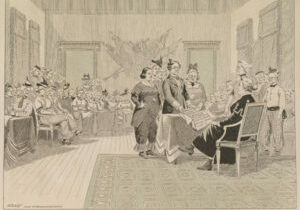Lesson Plans
Sit-In: How Four Friends Stood Up by Sitting Down
Pair the picture book, Sit-In: How Four Friends Stood Up by Sitting Down, with primary sources to have students practice close reading, build vocabulary, and investigate the civil rights movement in the context of the Greensboro sit-ins. After, students may share, in words or pictures, an example of how they have stood up for a cause they believe in.
The Meaning of the Federalist Papers
This lesson explores the Federalist Papers. In Part I, students engage in a discussion about how they get information about current issues. Next, they read a short background of the Federalist Papers and work individually or in pairs to closely examine the text. In Part II, student pairs analyze excerpts from the Federalist Papers and relate these documents to what they have already learned. In Part III, students work in small groups to research a Federalist or Anti-Federalist and role-play this person in a classroom debate.






